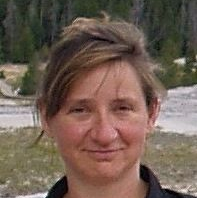Remote Sensing for Soil Organic Carbon Mapping and Monitoring
A special issue of Remote Sensing (ISSN 2072-4292). This special issue belongs to the section "Environmental Remote Sensing".
Deadline for manuscript submissions: closed (31 December 2022) | Viewed by 60247
Special Issue Editors
Interests: soil organic carbon; VisNIR spectroscopy; hyperspectral remote sensing; multivariate calibration; digital soil mapping
Special Issues, Collections and Topics in MDPI journals
Interests: soil spectroscopy; organic carbon; remote sensing
Special Issues, Collections and Topics in MDPI journals
Interests: image processing; remote sensing; machine learning; cloud computing
Interests: EO space missions; Remote sensing; thermal and optical EO systems; image processing; imaging spectroscopy
Interests: change detection; machine learning; object-based image analysis; big data analysis; land cover mapping; hyperspectral and multispectral image analysis
Special Issues, Collections and Topics in MDPI journals
Special Issue Information
Dear Colleagues,
Recently, the availability and quality of optical satellite remote sensing data have dramatically changed the paradigm for soil mapping and monitoring. Remote sensing of soil organic carbon (SOC) becomes feasible in a coherent manner from regional to global scales. The change of SOC over time is an important indicator of CO2 sequestration in soils and is often cited as a natural climate solution (NCS). A new generation of space-based hyperspectral missions is under implementation, giving rise to an additional advancement to the already promising results obtained using the Sentinel-2 multispectral instrument. The DESIS and PRISMA instruments are already available; the ENMAP and EMIT are ready to be launched; and the Surface Biology and Geology (SBG) and Copernicus Hyperspectral Imaging Mission for the Environment (CHIME) instruments are in the planning stage. Simultaneously, new methodologies and large soil spectral libraries are available or in development, which can be used for improved SOC modeling based on spectral data.
Promising results based on spaceborne sensors have been obtained by merging two types of techniques in order to map SOC from both permanently vegetated areas and exposed soils: i) for areas covered by permanent vegetation, Digital Soil Mapping (DSM) relying on empirical relationships between measured soil properties and spatially distributed co-variates, and ii) for exposed (mainly cropland) soils, imaging spectrometry based on chemometric techniques.
We welcome original manuscripts on the use of optical and thermal multi- or hyperspectral imagery for SOC mapping, as well as on the challenges involved in producing coherent SOC maps. Such challenges are the compositing of the images in order to increase the coverage of satellite imagery; the transfer of spectral models from spectral libraries to the remote sensing signal; dealing with mixed pixels and improved covariates for mapping soil properties in permanently vegetated areas.
Prof. Dr. Bas van Wesemael
Prof. Dr. Sabine Chabrillat
Dr. Adrián Sanz Díaz
Dr. Michael Berger
Dr. Zoltan Szantoi
Guest Editors
Manuscript Submission Information
Manuscripts should be submitted online at www.mdpi.com by registering and logging in to this website. Once you are registered, click here to go to the submission form. Manuscripts can be submitted until the deadline. All submissions that pass pre-check are peer-reviewed. Accepted papers will be published continuously in the journal (as soon as accepted) and will be listed together on the special issue website. Research articles, review articles as well as short communications are invited. For planned papers, a title and short abstract (about 100 words) can be sent to the Editorial Office for announcement on this website.
Submitted manuscripts should not have been published previously, nor be under consideration for publication elsewhere (except conference proceedings papers). All manuscripts are thoroughly refereed through a single-blind peer-review process. A guide for authors and other relevant information for submission of manuscripts is available on the Instructions for Authors page. Remote Sensing is an international peer-reviewed open access semimonthly journal published by MDPI.
Please visit the Instructions for Authors page before submitting a manuscript. The Article Processing Charge (APC) for publication in this open access journal is 2700 CHF (Swiss Francs). Submitted papers should be well formatted and use good English. Authors may use MDPI's English editing service prior to publication or during author revisions.
Keywords
- hyperspectral satellites
- imaging spectrometry
- soil remote sensing
- soil organic carbon maps
- natural climate solutions
- multispectral satellite missions
- spectral modeling
- digital soil mapping






